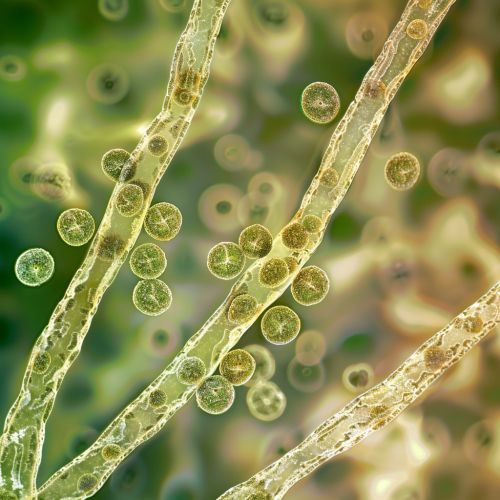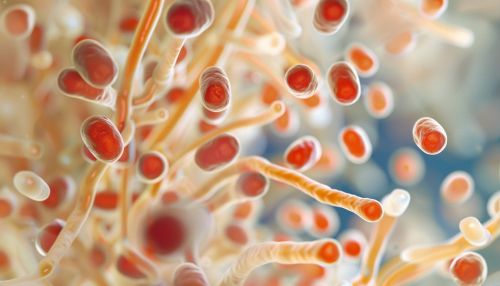Bradyrhizobium
Overview
Bradyrhizobium is a genus of Gram-negative, nitrogen-fixing bacteria that are notable for their symbiotic relationship with leguminous plants. These bacteria are found in the root nodules of these plants, where they convert atmospheric nitrogen into a form that the plant can use, a process known as biological nitrogen fixation.


Taxonomy and Phylogeny
The genus Bradyrhizobium belongs to the family Bradyrhizobiaceae, in the order Rhizobiales, of the class Alphaproteobacteria. It was first described in 1982 by Jordan, who differentiated it from the genus Rhizobium based on its slow growth rate. The name Bradyrhizobium is derived from the Greek words 'bradys' meaning slow, and 'rhiza' meaning root, referring to its slow growth rate and its association with plant roots.
Morphology and Physiology
Bradyrhizobium bacteria are rod-shaped and non-spore forming. They are motile by means of a single polar flagellum. These bacteria are also capable of forming a specialized structure called a symbiosome, which is essential for their symbiotic relationship with leguminous plants.
Symbiotic Relationship with Leguminous Plants
Bradyrhizobium bacteria form a mutualistic symbiotic relationship with leguminous plants. The bacteria colonize the root hairs of the plant, leading to the formation of root nodules. Within these nodules, the bacteria convert atmospheric nitrogen into ammonia, which can be used by the plant. In return, the plant provides the bacteria with organic compounds for their growth and survival.
Nitrogen Fixation
The ability of Bradyrhizobium to fix nitrogen is due to the presence of a specialized enzyme called nitrogenase. This enzyme is capable of reducing atmospheric nitrogen to ammonia, a process that requires a significant amount of energy. The energy for this process is derived from the oxidation of organic compounds provided by the host plant.
Applications in Agriculture
Due to their ability to fix nitrogen, Bradyrhizobium bacteria are used in agriculture to improve soil fertility. They are particularly important in the cultivation of leguminous crops such as soybeans, peanuts, and clover. The use of these bacteria can reduce the need for synthetic nitrogen fertilizers, thereby reducing the environmental impact of agriculture.
